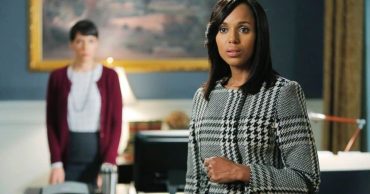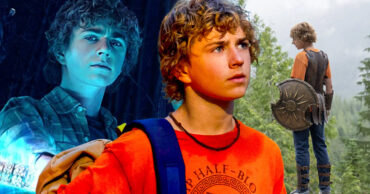
Back in my review of True Detective’s opening hour – “The Long Bright Walk”, a title whose significance is revealed in the closing moments of “Form and Void” – I talked about the Holy Trinity and the parallels Nic Pizzolatto drew between Rust, Cohle, and the spaghetti man now known as Errol Childress, three men trying to outrun the devils within themselves. Combined with the visual palette and plethora of visual metaphors, True Detective established itself as a battle between good and evil – both in the world, and within the minds and lives of Marty and Rust (whose role as prophet in this Holy Trinity comes full circle in the Jesus walk he takes with Marty as they leave the hospital at the season’s close).
In a traditional narrative sense, some might view “Form and Void” as a failure – or at the very least, a let down: the serial killer story line, for all its supernatural-tinged foreshadowing and long-reaching conspiracy, comes to a familiar close in the finale, in more ways than one (Marty and Rust split up, one of them shoots the suspect in the back of the head, Rust makes his way through a jungle, etc.). But as stated numerous times in the press by Pizzolatto, True Detective‘s dive into the depths of Louisiana’s woods was not about a series of killings – it was about two men desperately seeking peace in the vicious cycle of life they perpetuated for themselves, driven by repeated circumstances, and an unwillingness to change in the face of them.
For those seeking plot resolution, the events of “Form and Void” aren’t going to bring any closure; and this is by design. It’s not supposed to; as they point out themselves, Rust and Marty took out the only evil they knew – and like the night sky, the darkness forever threatens to consume the stars and planets we view as pockets of light in the universe. But Rust’s realization in the final scene points out that life doesn’t have to be such a continuous downward spiral; even in the darkest depths of our consciousness, in places that may or may not exist in the place between this life and the next, there is hope.
Hope is everywhere, even in the hottest depths of Carcosa, the shadowy, twig and corpse-filled hell where Cohle hallucinates the edge of the universe, the spiral of the universe collapsing into nothingness as Errol stabs him in the midsection, giving way to the illuminating, life-changing moment Rust later explains to Marty, breaking down in the emotional culmination of True Detective‘s first season. The biggest cynic quietly becomes the hopeful; in the face of death, Cohle may not have found something to live for, but at the very least, something to look forward to (after all, he’s not the type of man to take his own life, remember?). He tells Marty about how he “feels” his daughter and his father around him, a feeling that hasn’t quite left him even after he fully returns to the world of the living. His reality is now different; when he looks at the night stars, it’s not with the same cynical, nihilistic view that darkness consumes all. His last words – and True Detective‘s final line of dialogue – is “The light’s winning”; in the presence of the disillusioned priest (Marty) and the Holy Ghost (the Yellow King, an entity who lives on, even in the absence of Errol Childress), Rust is literally delivered into the light, a man who found hope in the darkest of places (he literally finds hope and happiness in death, talking about how he knows they’re still waiting for him… a delightfully morbid shift in philosophy for our mustachioed hero).
The most satisfying parts of “Form and Void” are these; while its fun to watch Cohle and Hart chase down one more bad guy together (in brutal, life-threatening fashion, of course), “Form and Void” is at its best when it bucks the trend of the last two hours and quietly returns to the metaphysical musings of previous episodes, using them to cathartic ends in the season’s closing moments with the two main characters. True Detective ends as it should: two men finally stepping out of seventeen years of darkness into the light, where they can finally let go and begin healing – and does so in spectacular fashion, led by the knockout performances of its two leads in their final moments. The cycle of violence will undoubtebly repeat itself in Louisiana; but for these two men, their own vicious, destructive cycles have finally come to an end, the spiral of their lives ending not in the darkness of death, but in light – and according to Rust, “the light’s winning.” Given the circumstances surrounding them, I couldn’t think of a better, more hopeful way for True Detective‘s first season to end.
Other thoughts/observations:
– fantastic meta moment when the two detectives start explaining details to Marty and he waves them off, a reminder that the case really doesn’t matter, and never did.
– Rust: “Everybody’s got a choice.”
– looks like we won’t find out what Maggie’s family (and Audrey) had to do with any of this; in the very least, we can infer that something happened to Audrey, like she witnessed one of the crimes, or quietly became a part of the cult. Very weird.
– Please do not ever say the phrase “make flowers” to me in public, or run the risk of getting vomited on. Throwaway, predictable bits of redneck incest characters, but it doesn’t make the phrase any less creepy to hear.
– what was with Errol’s North by Northwest inspired vocal affectations? SO WEIRD.
– The Tuttle family quickly separates themselves from any connection with the Childress family, allowing for the cycle to continue somewhere else, with the next generation of weirdos in animal masks performing human sacrifices for whatever reason.
– Didn’t the final room in Carcosa look very similar to the place where the human color palette was being compiled in Hannibal? The hole in the ceiling is a great symbolic device, suggesting a new depth to the darkness within the world, though unable to completely hide from the light shining in. Even the creepiest places of True Detective were a little hopeful.
– I hope you’ve enjoyed reading about True Detective as much as I’ve enjoyed writing about it. See you in 2015!
[Photo via Lacey Terrell/HBO]
 Follow Us
Follow Us





